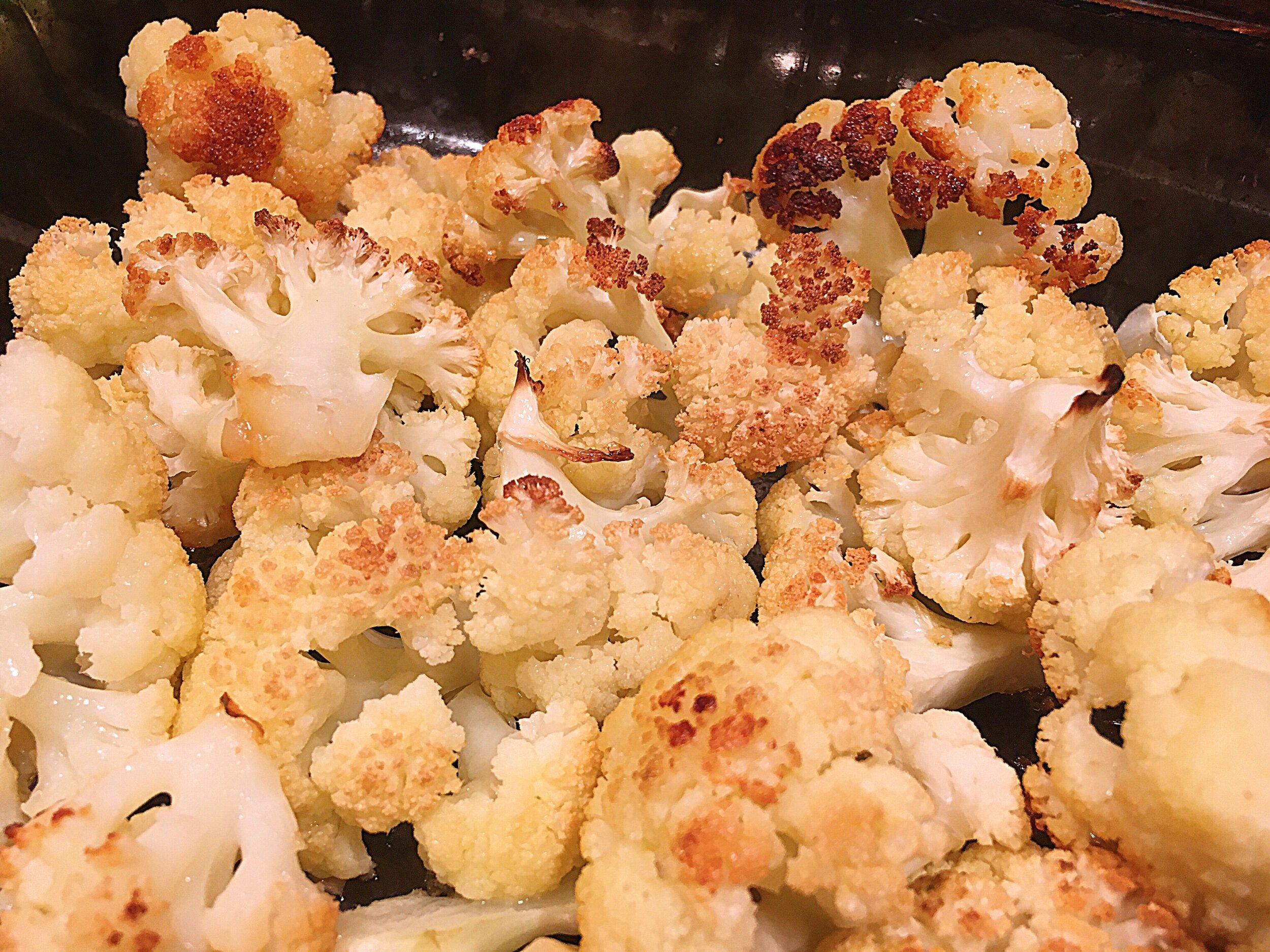Berkshire Eagle Column: Cauliflower! Two Recipes in One!
This past week I shared something I’ve made more times than I can count. Roasted cauliflower was the most frequent vegetable when my kids were growing up, and Wilson especially loved the ‘secondary’ dish with pasta that he always referred to as a ‘sauté.’ The column itself can be found at this link, or scroll down to read it here.
CAULIFLOWER: TWO FOR ONE
by Elizabeth Baer
My friend, Lisa, once told me she will not embark upon a recipe that requires her to cook something first before getting started on the recipe itself. Although I love to cook so much this will not necessarily deter me, I do understand her view. I preview a lot of cookbooks from the library, and there have been many stunning volumes that I have decided not to buy because almost every recipe has at least one sub-recipe, and often more!
But what if what you cook could be your side dish one night with enough left over to incorporate into another side dish the next night?
When my sons were young, a frequent vegetable on the dinner table was roasted cauliflower. And because cauliflower is usually priced by the head, I would try to pick the largest one I could find so it would last for more than one meal.
For the second meal, I like to use the cauliflower in a pasta dish. Like so many of my go-to recipes, it’s entirely adaptable depending on what you have in the house. Raisins and pine nuts, often featured in Sicilian cooking, provide the inspiration for this version.
If I can only impress upon you one thing, please take the pasta directly from the water and place it into the sauté pan, using tongs for pasta strands or a spider for shapes. The starchy pasta water will help build the sauce and keep the dish moist.
Here I’ve used some pancetta, in the pasta dish, but anchovies will also add flavor for pescatarians. Or omit both and it will still be great. For a vegan version, you can omit the cream and use some additional pasta water and olive oil instead.
ROASTED CAULIFLOWER
Serves 2-4 as a side
INGREDIENTS:
1 large head cauliflower, cored and cut into florets
4 garlic cloves, halved lengthwise
¼ teaspoon kosher salt
4 tablespoons olive oil
2 tablespoons water
DIRECTIONS:
Preheat oven to 400°F.
In a large baking dish or roasting pan, spread the florets into a single layer. It’s fine if they are snug, or even if some florets are in a second layer, but most should fit in one layer. Sprinkle with salt, then drizzle with olive oil and water.
Roast for 45 minutes, shaking the pan once or twice during the cooking process, until the cauliflower begins to caramelize on the edges.
Set aside 2-3 cups of cauliflower before serving, if making the recipe below.
Note: If you are cooking something else in the oven at a different temperature, anywhere between 350-425°F, this method will work with the cooking time adjusted.
CAULIFLOWER PASTA WITH RAISINS AND PINE NUTS
Serves 2 as a main dish or 4 as a side
INGREDIENTS:
1 tablespoon olive oil, plus more if needed1 ounce pancetta, chopped into ¼-inch cubes or 2-3 anchovy fillets; omit entirely for vegan
½ small onion, chopped
¼ teaspoon crushed red pepper flakes
¼ teaspoon kosher salt
⅛ teaspoon fresh ground pepper
8 ounces dried pasta
¼ cup golden raisins
2 tablespoons pine nuts
2-3 cups roasted cauliflower, loosely packed
⅓ cup heavy cream
Grated Parmesan for serving
DIRECTIONS:
Bring a pot of salted water to boil for the pasta.
Meanwhile heat the oil in a large sauté pan over medium-high heat until shimmering and fragrant. Add the pancetta or anchovy fillets, if using, and allow the pancetta to begin to render its fat, or the anchovies to begin to dissolve. Add the onion, red pepper flakes, salt, and pepper and continue to sauté until the onion softens and begins to brown.
Add the pasta to the boiling water while you are sautéing the previous ingredients, according to the package directions for timing. When there are five minutes remaining on the pasta, add the raisins, pine nuts, and cauliflower to the sauté pan and cook, stirring occasionally to make sure the pine nuts don’t burn. Lower the heat if necessary.
If you have lowered the heat under the sauté pan, turn the heat back up to medium, and move the pasta pot right next to the sauté pan. Remove the pasta directly from the water into the sauté pan, using tongs for a strand pasta, or a spider or strainer for a shape. It is important that some water cling to the pasta as that helps build the sauce. Add the heavy cream and stir to combine everything. If making a vegan version or if it seems too dry, add some more pasta water or additional olive oil and mix again. Serve immediately with grated Parmesan.


